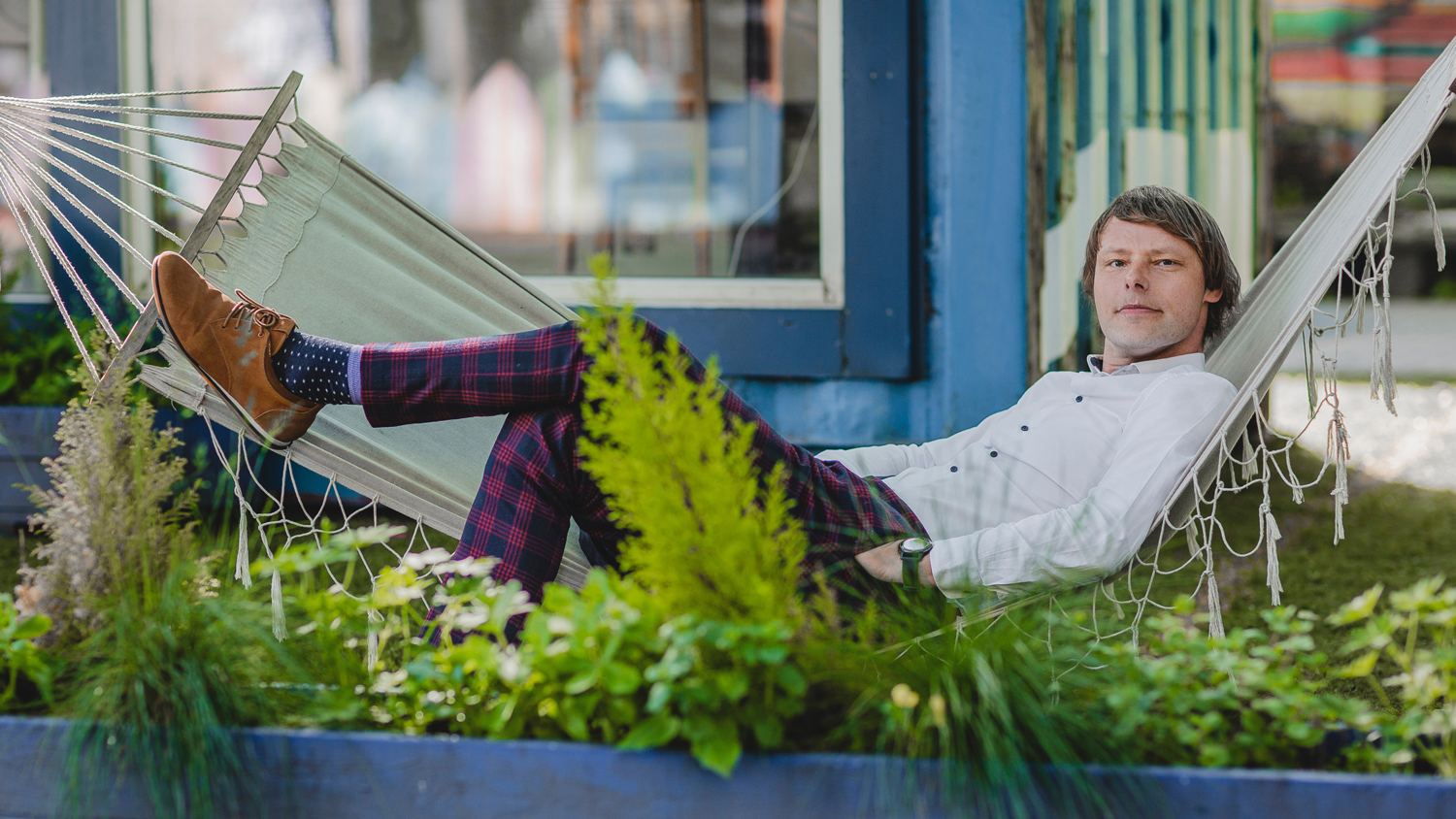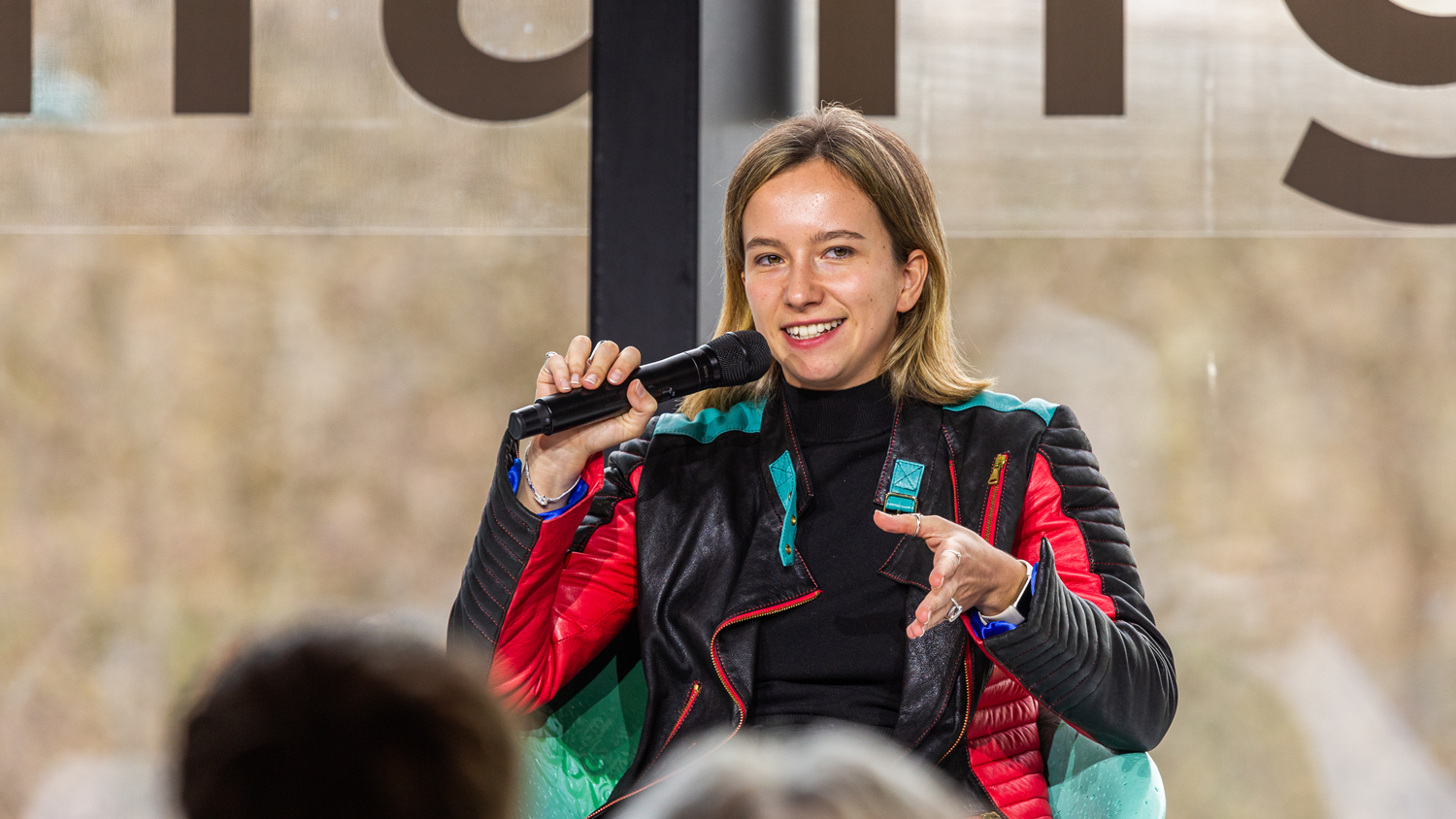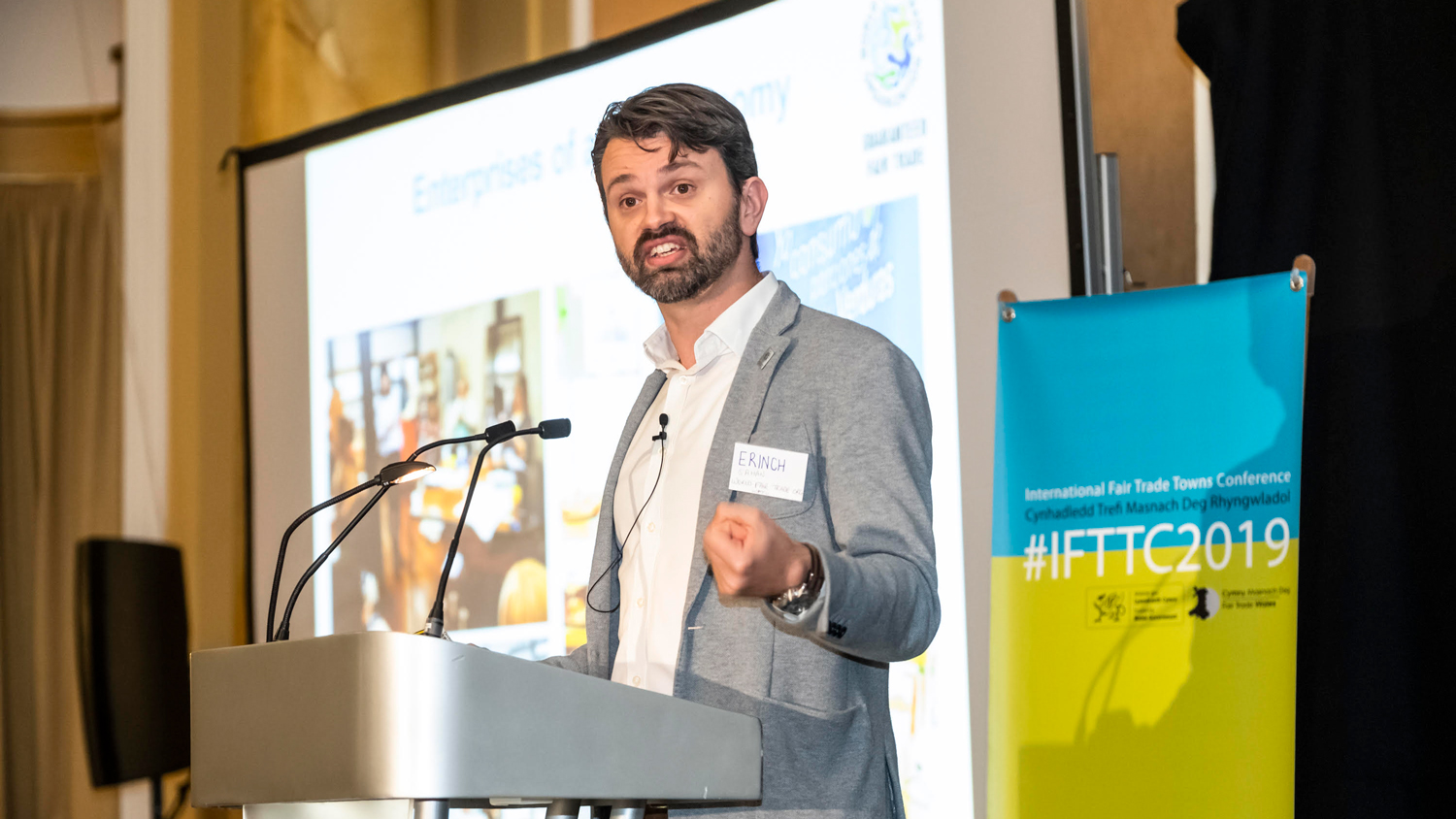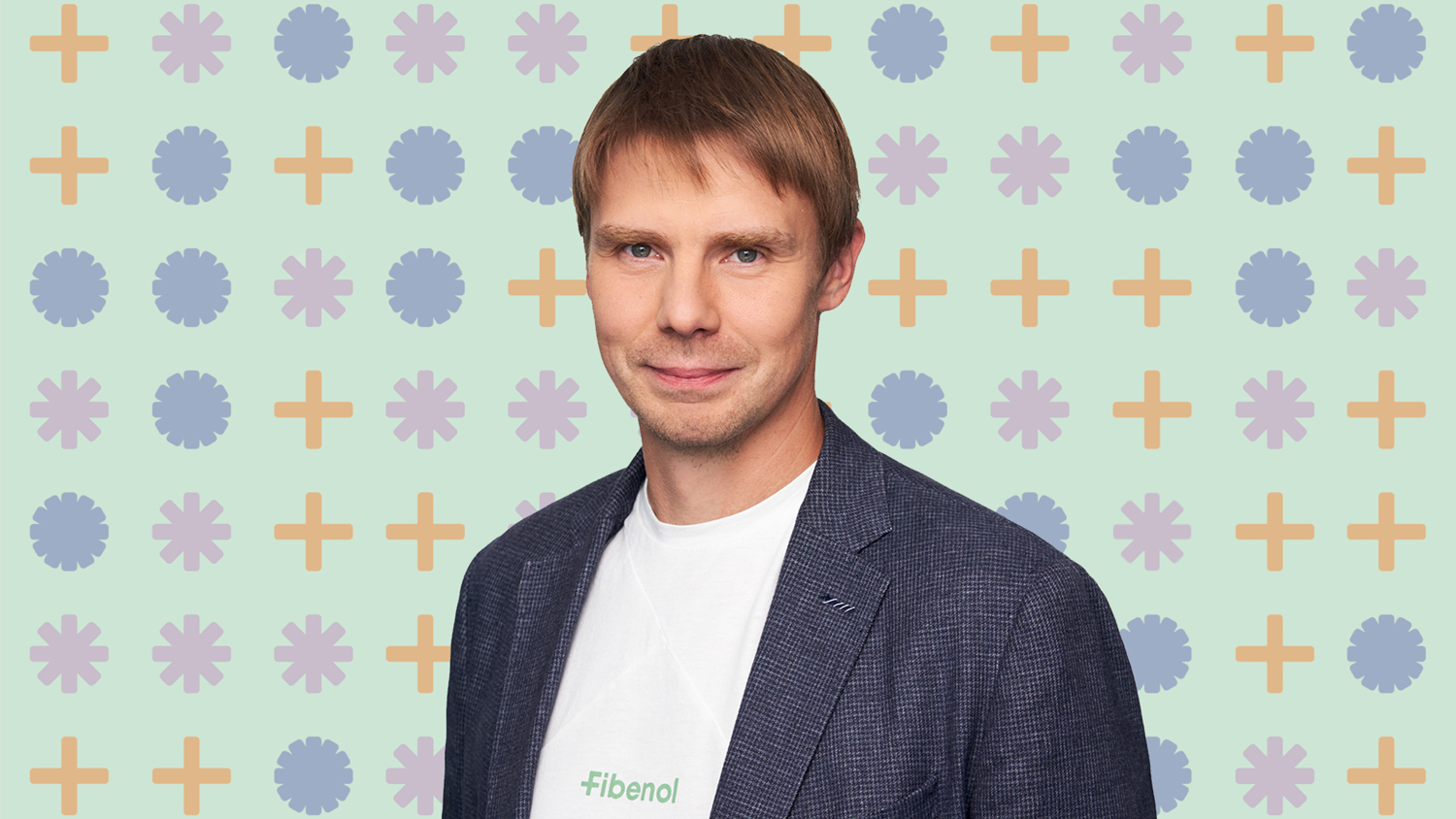Rainer Pesti is a committed advocate of the circular economy business model, whose knowledge in circular economy and change management has helped many companies create new business models. Additionally, Rainer’s background in IT is the reason why digitalization is so central to him.
When and why did you become interested in the circular economy business model, and what is its significance in promoting sustainability?
My interest in circular economy solutions began while working at Ragn-Sells, but my true passion for the topic developed in 2018 when I went to Sweden to study change management at the Swedish Institute. There, the focus was largely on circular economy business models and how to reshape today’s business models and transform company strategy and culture.
What are the main challenges in implementing the circular economy in traditional industries?
The biggest challenge is being tied to existing investments. When tens or even hundreds of millions of euros have been invested in current production facilities and factories, there is a strong desire to fully utilize these investments.
What are the opportunities for implementing the circular economy in traditional industries?
Increasingly, businesses are shifting from selling products to renting them to earn higher margins. It has become clear that service-based models, such as Product-as-a-Service (PaaS) and Software-as-a-Service (SaaS), allow for greater margins compared to simply selling products. Almost everything is being rented today: heavy machinery, furniture, children’s clothing. On average, a single pair of high-quality clothes is used by five children. These models enable higher margins than one-time sales and help keep customers engaged. We see even coffee cups being rented, and soon we will see the rental of electric car batteries separately from the car.
One of the biggest changes brought by the circular economy is in the materials industry. Traditionally, raw material production required owning natural resources, but now with Urban Mining, it is possible to establish businesses that extract materials from waste. An economy driven by raw materials can be created without owning these materials in the ground. There is more gold in electronics than in gold ore, and the same is true for copper, silver, and other precious metals. Electric car batteries are filled with extremely valuable materials.
Today in Estonia, we are designing a hydrometallurgical process with Jälle Technologies to recycle the precious metals in batteries. If we can validate the right partners, we might not sell these recovered metals but rent them out, essentially renting out molecules. At Ragn-Sells, we developed technology to extract calcium, magnesium, silicon, aluminum, and other elements from the ashes in Ida-Virumaa.
Since producing new materials from waste has a significantly smaller carbon footprint, the circular economy is largely the answer to achieving global climate goals. This same low-carbon footprint of products opens doors that are often closed to Estonian manufacturers. For example, calcium carbonate produced from oil shale ash has an unparalleled low carbon footprint globally. This has attracted the attention of several major construction material manufacturers in Europe, as Ragn-Sells’ product helps reduce their carbon footprint.
Currently, there is a discussion about whether Estonia should start mining phosphorite. The only phosphorite deposit in Europe is in Finland. Another option is to start mining it in Estonia. However, there is also a natural alternative – the phosphorus needed for animal feed and agricultural fertilizers can be valorized from sewage sludge with an 80 percent smaller carbon footprint. Every major city can set up its own phosphate production without having to mine anything from the ground. VKG is developing a polymers industry from plastic waste, and Eesti Energia plans to do the same with tires. Estonia’s success in heavy industry includes companies like Estanc. Some companies, like Cramo and Ramirent, have developed successful circular economy models without even realizing it.
Recently, I attended a conference in Lithuania where, before my presentation, it was discussed how people over 40 struggle to adapt to the digital changes occurring in the market, losing their competitiveness. The room was packed with these same 40+ boys and girls – same as me – who were quietly listening and thinking about how they had missed the train. I believe the same will happen with the circular economy: many entrepreneurs will find themselves at a conference, realizing how they missed this opportunity.
How can digital technology and innovation contribute to achieving sustainability goals in companies and organizations?
Technology plays a tremendous role. Most circular economy business models rely on digital platforms. For example, Bolt – imagine the success they would have had if they had started a traditional taxi company instead of a digital platform-based ride-sharing business. Blockchain technology provides transparent supply chains, making operations in the so-called grey areas more costly. AI enables the analysis of large data sets and the optimization of company activities, including energy use. Space technology helps predict the impacts of climate change and monitor the health of the planet in real time. Technology also aids in carbon capture, the production and management of clean energy, and its storage.
Five years ago, when I mentioned that one day it would be possible to track the journey of every package and its carbon footprint during production, it seemed like science fiction. Today, thanks to RFID printing technology and real-time data collection technologies, this is becoming a reality.
What might the future hold for the circular economy and sustainability, and what are the next steps in developing these fields?
The market changes can be driven mainly by two parties: consumers or legislation. Today, it seems that legislation, especially in Europe, is taking the lead. This is due to Europe’s industrial dependency on non-democratic countries like China, Russia, and Belarus. These countries supply critical raw materials for European industries, which in turn creates economic and security risks. The number of critical raw materials for European industries has increased from 14 to 34 elements in the past decade. For instance, 95 percent of the elements in electric car batteries come from China, yet we aim to transition to electric cars by 2032.
This dependency is becoming a huge economic and security risk. One of the main ways to mitigate these risks is to promote the circular economy, ensuring that materials produced can be used for as long as possible and repeatedly reused.
The circular economy also plays an invaluable role in achieving climate goals. The current material and food industries, based on natural resources, account for half of global emissions. Recycling materials has a significantly smaller footprint, often saving 80-90 percent of carbon emissions. If we could globally redirect ten percent of the materials currently being newly produced into recycling, we would have a strong chance of meeting climate targets.
What is your unpopular opinion on sustainability?
It is inevitable that major changes will lead to generational and opinion conflicts. There are those who see opportunities in changes and those who are dependent on existing large investments.
Communication about the true meaning of the green transition has been inadequate. The Green Transition means a shift to a new societal and economic model focused on responsibility and value creation, not a 180-degree turn where all the lights go out and we have to cross our arms and do nothing.
In Estonia, climate problems are not perceived as urgent because they have not yet directly affected us. However, from an economic competitiveness standpoint, we will be among the first to feel the negative consequences because our main export markets have decided to lead the way in circular and climate-neutral economies. At the same time, the lessons learned from Nordic markets will help us adapt through the pain, and in the global picture, we will likely still be at the forefront.
What is your biggest dream?
Using Peeter Koppel‘s words: “We are facing a Hollywood-like scenario, namely ‘The Good, the Bad and the Ugly.'” (a reference to the 1966 cult Western). NASA and IPCC reports indicate that in the next 50 years, we will face crises due to pollution, biodiversity loss, overconsumption, and global warming.
My biggest dream is that we have enough political and societal courage to make tough agreements that ensure the achievement of global climate goals. It may sound a bit idealistic, but my wish—considering all the megatrends—is that my children and their friends have at least as good an environment to live in as my generation has had.









